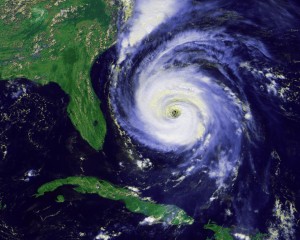 With the spring season upon us, strong storms have begun to appear on a regular basis. The storms can lead to high winds which, in turn, can cause damage to your doors.
With the spring season upon us, strong storms have begun to appear on a regular basis. The storms can lead to high winds which, in turn, can cause damage to your doors.
In fact, we covered the basics of what to do with a door that continues to get caught by the wind. (Hint: You probably need a different closer.) However, for those of you who live in more tropical locations, hurricane force winds, along with wind storms, are a legitimate concern.
In fact, one of the most common questions we are asked is “How do I know if I need hurricane-rated doors for my facility?” (It’s directly behind “How can I tell if my door is fire-rated?”) Just like with fire-rated doors, hurricane-rated doors also have to go through, and withstand, many tests to qualify.
Of course, if your facility is located in Florida, your first resource needs to be the Florida Building Commission. This organization drafted a statewide building code that developed regulations for the entire state of Florida. If you’re anywhere other than Florida, you’ll want to consult your local AHJ (Authorities Having Jurisdiction.)
Hurricane Basics
According to the National Hurricane Center, winds have to reach and sustain 74mph during a sustained period of time before they’re considered “hurricane force” winds; however, it takes much less than that to cause damage to your door.
More often than not, many don’t consider more than just the speed of the wind when taking into account whether or not they believe their door will withstand that type of environment. It’s usually the debris that gets thrown around in the middle of those winds that cause the most damage.
Hurricane-Rated Doors
Hurricane door ratings are based on how much wind-force a door and all of its components (the frame, all of its hardware, etc.) can withstand. This is measured by pounds of pressure per inch, otherwise known as “PI.”
The level of PI you need varies by what type of environment your facility is in. If you have a facility that’s located directly on the beach, in a hurricane-prone area, could require a PI of 70 or 80, while a facility located further inland might only require a PI of 60. The average wind-force in the area needs to be taken into effect when you make the decision about which level of PI is needed.
Hurricane Testing
There are several tests that products are put through before they receive the hurricane rated seal of approval. Testers must see if the door and all of its components can stand up against certain amounts of wind pressure, water infiltration, and debris impact. If the products make it through those tests, they are qualified as “hurricane rated.”
This video below gives a great overview of how hurricane-rated doors are tested.
Hurricane season is right around the corner. Make sure your facility is up to code when it comes to hurricane ratings and if you have any questions, give us a call. We’re more than happy to help!
